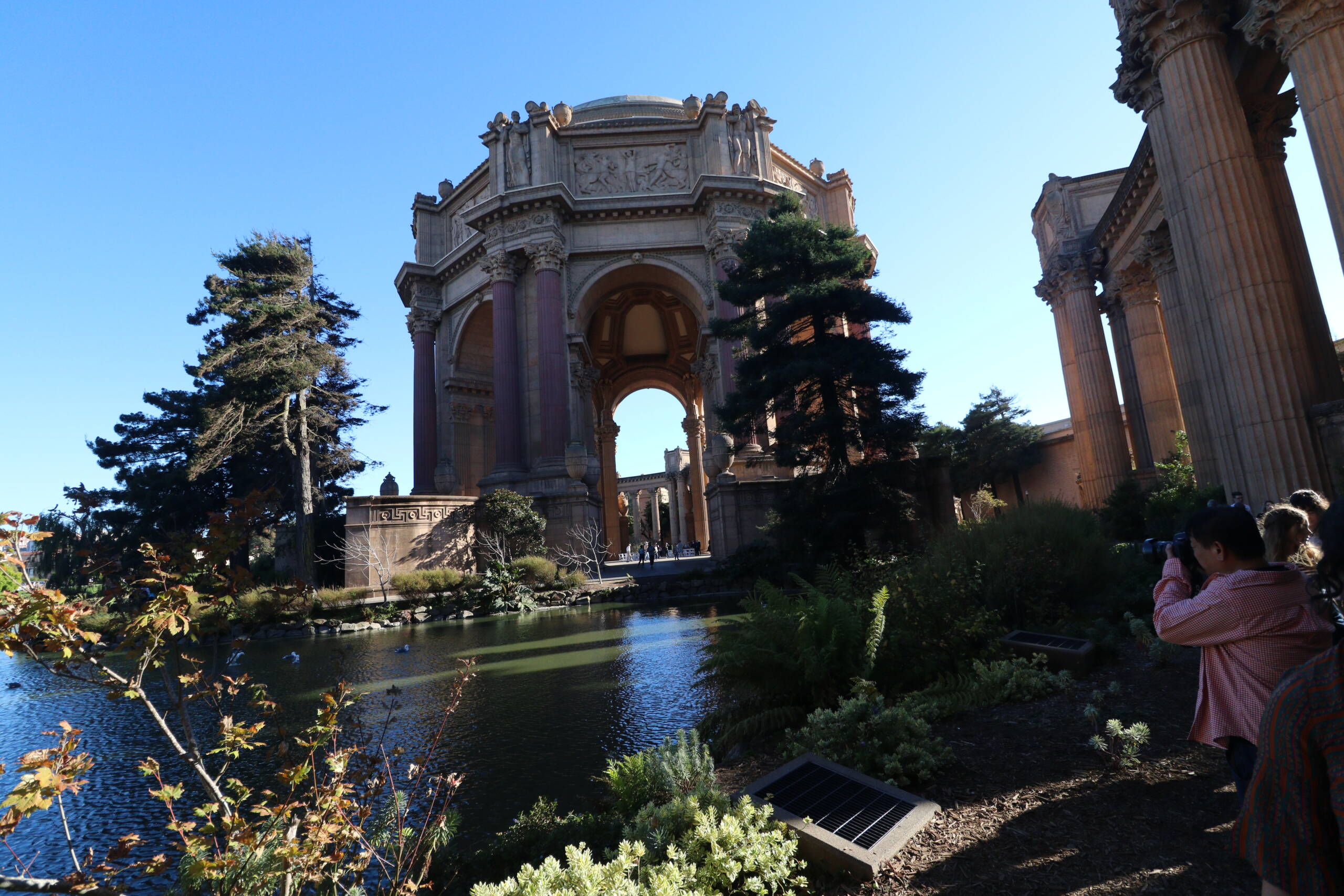I wandered into the Palace of Fine Arts almost by accident, camera slung over my shoulder, the kind of stop you think will be quick but ends up holding you for much longer. The first thing you notice isn’t the details, it’s the sheer size of it—this monumental rotunda rising like a piece of ancient Rome, except here it’s tucked into a quiet San Francisco neighborhood. The pond circling it acts like a mirror, breaking up the drama with the gentlest ripples, ducks gliding lazily as though they’ve claimed this little corner of history for themselves.

Photographing it is addictive. I kept shifting my angle, leaning into the shadows cast by the pines, then pulling back to frame the dome against the crisp blue sky. Every turn gave me something different—the carvings catching the light, the fluted columns standing rigid like silent guards, the archway opening onto the sky as if it were a portal. There’s a strange paradox here: it feels ancient, timeless even, but it was built in 1915, a temporary monument that somehow refused to fade away.
I liked watching the people more than anything. Couples taking engagement photos in the golden glow, a man crouched low with his telephoto lens, kids darting along the pathways. It reminded me that spaces like this aren’t just for standing back and admiring—they’re meant to be lived in. I caught myself lingering by the pond, half-distracted by the way the sunlight glanced off the water, half just listening to the chatter of strangers marveling in different languages.
By the time I left, the light had shifted again and the colors of the stone seemed to deepen, almost solemn. That’s what I love about traveling with a camera—you think you’re just documenting a landmark, but what you’re really catching are the changes: the mood of the place, the way it folds you into its story for a little while. The Palace of Fine Arts does that beautifully. You don’t just visit it; you drift inside it and let it carry you, like the reflection on its pond, until you’re ready to move on.
Leave a Reply